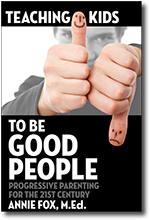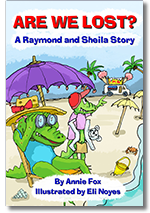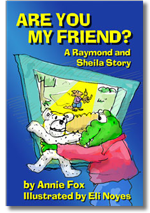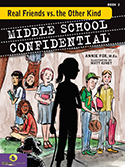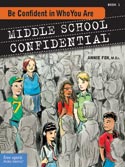July-August 2006
We are Family
by Annie Fox, M.Ed

Recently my niece Lindsay* reported that she’d been contacted through her MySpace account by a girl who has the same first and last names as she does. Because of their unusual last name, and the fact that neither of them had ever met anyone outside of the family who had it, my niece logically thought the two of them might somehow be related.
“Not likely,” the other Lindsay replied. She went on to explain how her grandfather had taken the simple, American-sounding surname when he legally changed it from “L_________” the unwieldy, Polish-Russian name he’d been born with.
“Ohmigod!” our Lindsay shot back. “‘L_________’ was my grandfather’s name before he changed it!!”
*Both Lindsay's are adults. To protect kids and teens online check out these safety tips.
The borscht began to thicken. It started looking like this other Lindsay might actually be a relative... but if so, how come we’d never heard of her before? And where did she fit into our family tree?
 After
bringing the girl’s father and grandmother into the loop and referencing a woefully incomplete, hand-drawn
family tree, I determined that Lindsay and Lindsay’s great-grandfathers were brothers. That meant me, my brothers,
the other Lindsay’s father and uncle, our kids and grandkids are all part of my father’s side of the
family. We lost contact with these folks after my dad’s passing in 1965. That can happen when there’s
a death or a divorce. Not only do the kids lose their relationship with the deceased or divorced parent, they
often lose important connections to grandparents, aunts, uncles, and cousins. Those losses can have
After
bringing the girl’s father and grandmother into the loop and referencing a woefully incomplete, hand-drawn
family tree, I determined that Lindsay and Lindsay’s great-grandfathers were brothers. That meant me, my brothers,
the other Lindsay’s father and uncle, our kids and grandkids are all part of my father’s side of the
family. We lost contact with these folks after my dad’s passing in 1965. That can happen when there’s
a death or a divorce. Not only do the kids lose their relationship with the deceased or divorced parent, they
often lose important connections to grandparents, aunts, uncles, and cousins. Those losses can have
an immediate impact. They can also reverberate decades into the future.
Within days of our startling discovery we purchased a powerful family tree program for my Mac and I began entering names, births, marriages, deaths, etc. Even though I’d collected snippets of family history for years there were many gaps in my knowledge. To fill them I started emailing my cousins. Normally, the best relatives to tap for family history are the oldest ones, but all I’ve got left now are the ones in my own generation. (Hey, that’s what happens when you procrastinate.) Information about generations past and present poured in. Through Google and a NY Times obituary, I reconnected with two other “lost” cousins, which provided new information about my paternal grandmother’s side of the family. Within a few weeks, I’d entered over 450 names in our Tree. Then David got into the project and connected with several long lost cousins of his own. Now our joint Family Tree has nearly 700 names!
In June we posted the Tree online and sent out the link to our family. Everyone loved having this record to explore and share. And that’s what it seems to be all about… discovering the connections and realizing that we’re all part of the same tribe. It’s empowering to know that within your own family you always have a place where you belong. You can even see it right there—on that branch of the tree. That’s where you fit into the big picture. And you always will. Even when you’re gone.
A sense of belonging is essential for all of us. It’s especially important for adolescents as they wrestle with identity issues, desperately trying to fit in with their peers. But unlike those peers, who can be overly critical as they one-up each other in their quest for popularity, your family doesn’t care if you wear the right clothes or whether you’re a great athlete. Your family cares about you because you’re a part of them.
So why not begin a family history project this summer? You don’t need any special software to begin. All you need is some curiosity about your ancestors and an interest in family connections.
How to Get Started on a Family Tree
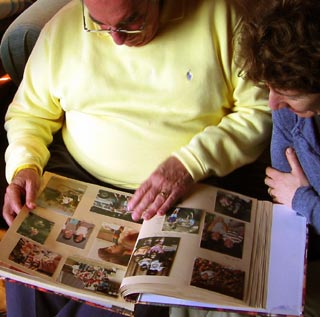 Gather as many old family photos as you can. Don’t have any? Ask older relatives
to send some. Or better yet, invite the relatives over and have them bring the family album.
Gather as many old family photos as you can. Don’t have any? Ask older relatives
to send some. Or better yet, invite the relatives over and have them bring the family album. - Get comfortable for a photo viewing. Black and white shots have a special charm for today’s kids. If you want to hook them into family history, start by showing them photos from your childhood. These will likely contain some older relatives that your kids don’t know. Can you identify who they are? Can you explain the family connection? If you don’t know who they are and you don’t find out, then they become forgotten, nameless people in an old photo instead of who they really are… family!
- Start drawing a family tree. Use a big piece of paper and write small (it will get filled up quickly). Get the kids in on it from the beginning by asking them if they know their grandparents names on both sides. Did/does Grandpa have any siblings? Extra points for Grandma’s maiden name! Who knows great-grandparents? (Do I hear great-great?)
- Got dates and places of birth? If ancestors are deceased and you know how old they were when they died, you can easily figure out their birth year. If your ancestors were born far from where they died, there’s a story in how they got from here to there. See if you can find out what it is.
-
Brainstorm ways you might fill in “blanks” in your tree. Who might know more about some of the people in your family? If you’ve lost touch with relatives, how might you find them again? HINT: Google is a great way to track down “lost” family members. So is the newly updated Ancestry.com which contains a database of detailed family information gathered from US census records from 1790-1930.I was named for my maternal grandmother who died before I was born. I always felt a connection to her and loved hearing about her life. At 16, Grandma Anna escaped an arranged marriage in Austria by getting on a ship and coming to America alone. She spoke 4 languages and learned to drive (Grandpa never did). She also formed a tenants association and negotiated grievances with the powerful landlord of their New York tenement.
- If you really get into this, inevitably you’ll find that it becomes impractical to keep track of everything on paper. Let’s hear it for computers and genealogy software. They greatly facilitate creating, maintaining and sharing family tree information. You can find free genealogy software or spend up to $100 or so.
- Share stories! Many of our ancestors are known to us only through the stories told by our parents and grandparents. Those stories keep loved ones “alive” in our hearts. Maybe it’s the only real way to live forever.
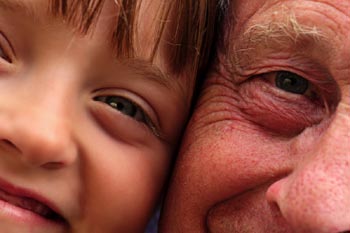 Teens are often fascinated and inspired by what they learn of the lives and deeds of their ancestors. It also gets them
thinking about their own choices in terms of the legacy they are creating for their future kids and grandkids.
Teens are often fascinated and inspired by what they learn of the lives and deeds of their ancestors. It also gets them
thinking about their own choices in terms of the legacy they are creating for their future kids and grandkids.
I’m very grateful to my mom for sharing so much family history with me. Maybe because I was so intrigued by her childhood memories, she never tired of answering my questions. Even as a kid, I sensed that this information was worth keeping. I still remember those happy times with my mom, pouring over old photos and hearing her wonderful stories. I’ve continuously shared the photos and stories with our kids. But memories fade. That’s why our family history is now in a very safe place where anyone in the family can access it, add to it, and pass it on. Our ancestors must be pleased that we’ve taken such an interest. They’ll probably be smiling down on us next month when we go back east for a reunion with the “new” cousins.
In friendship,
Annie





